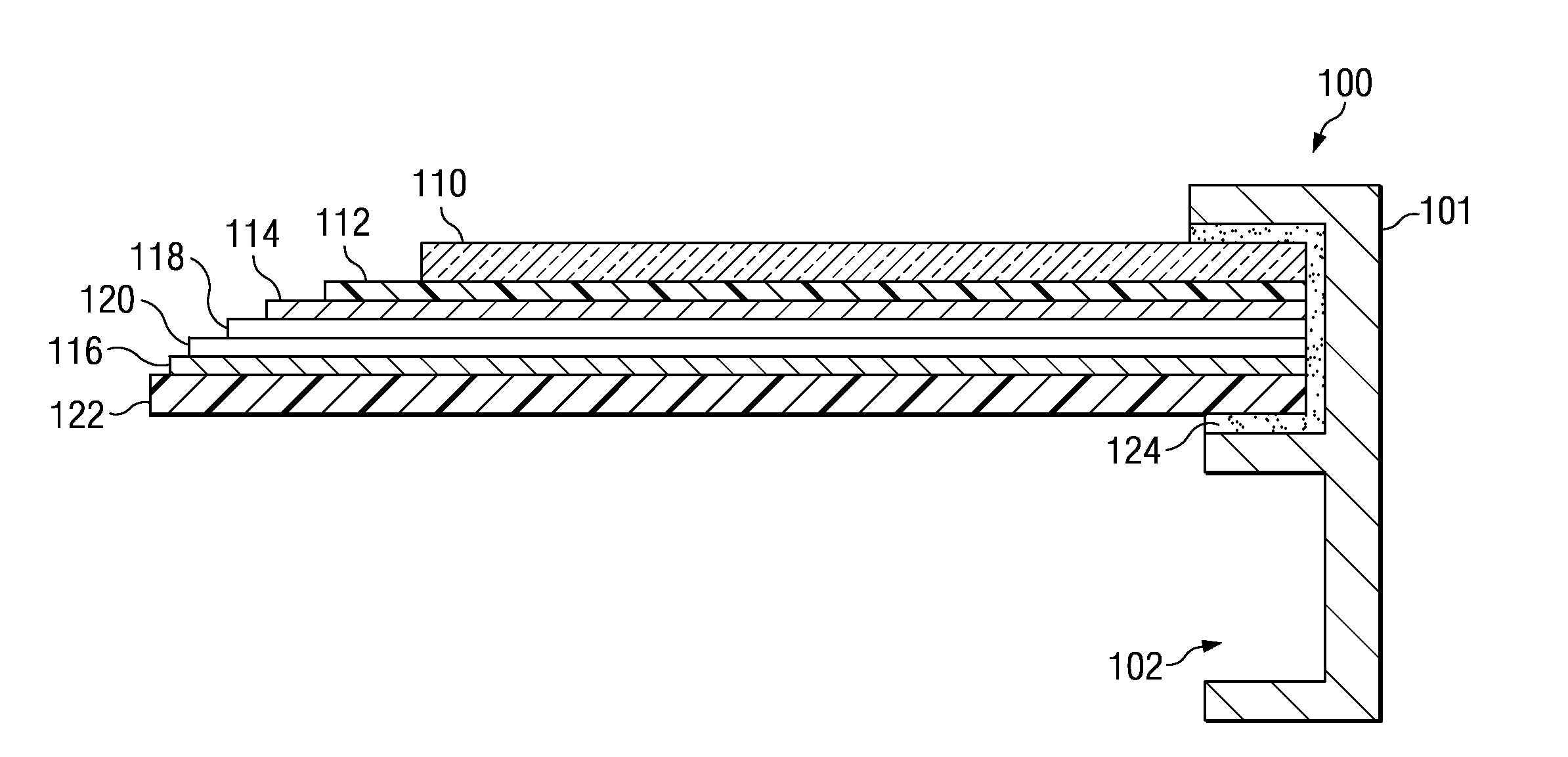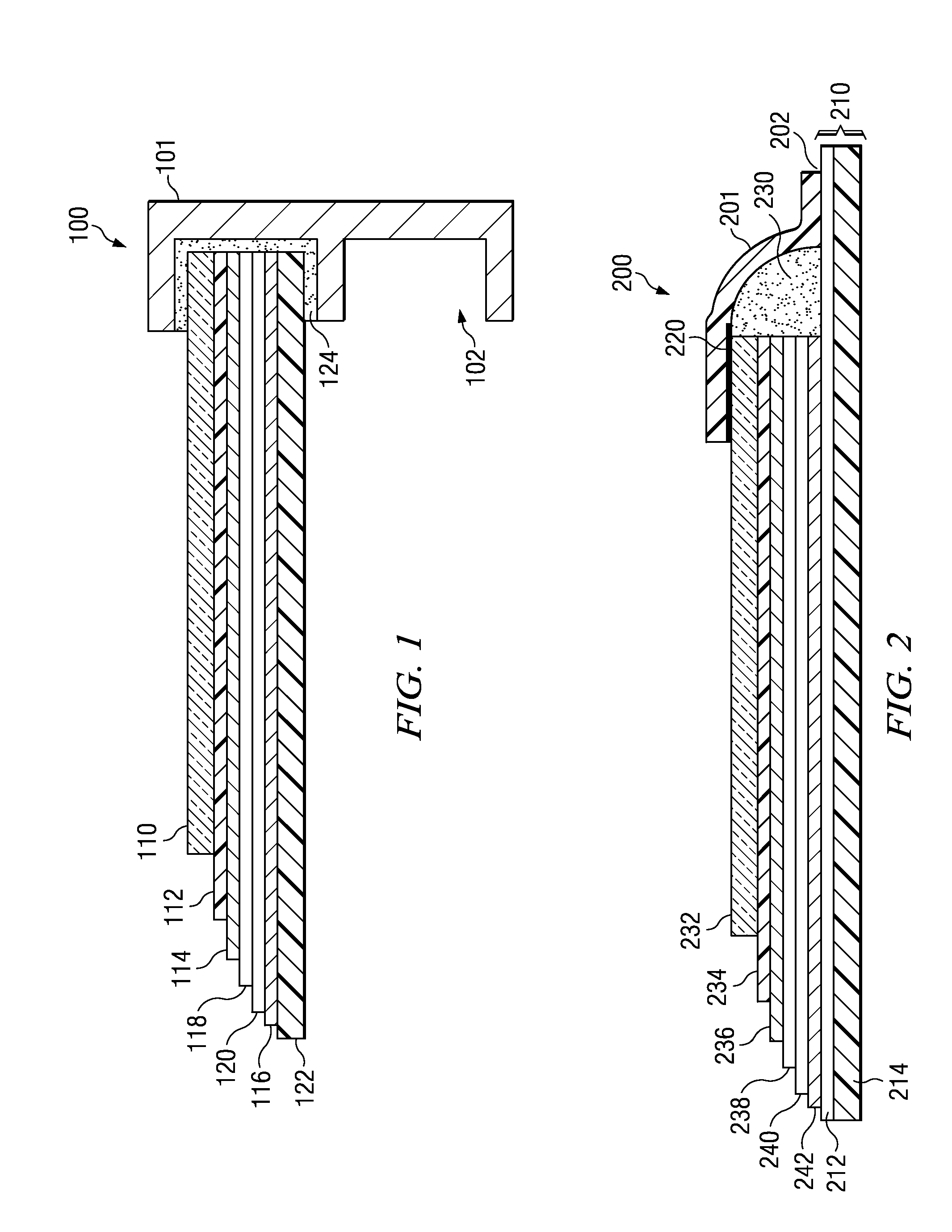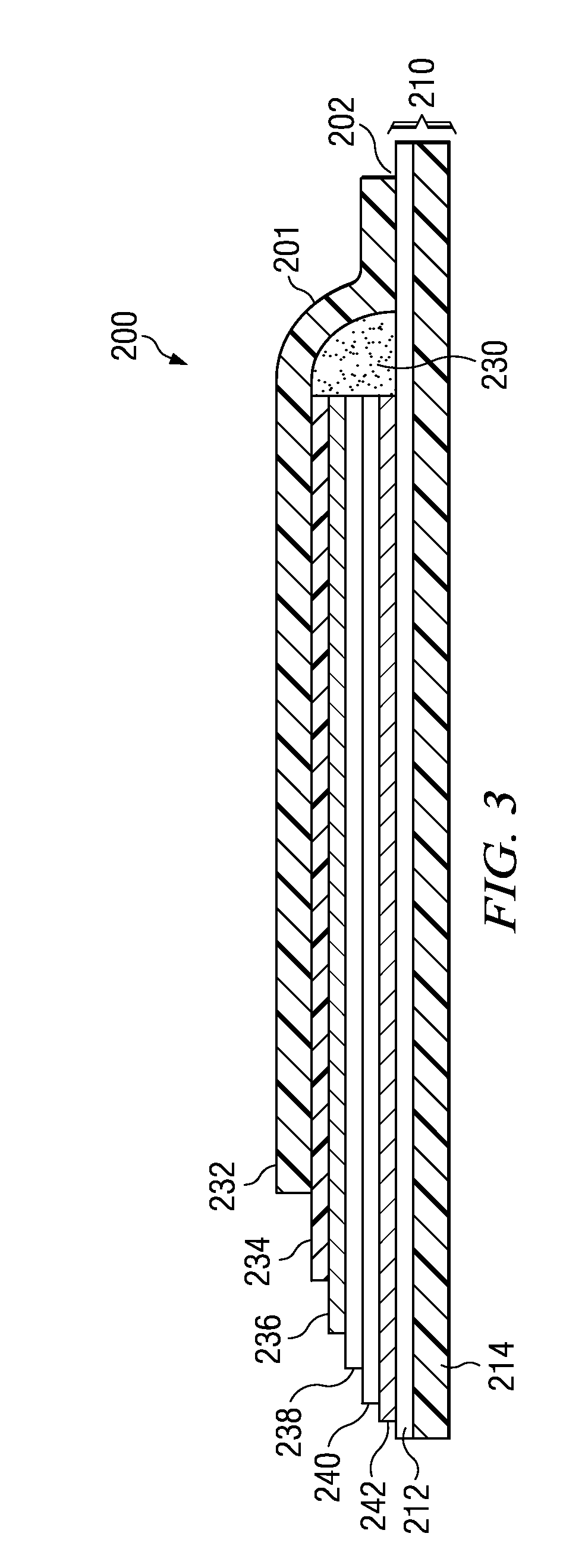Photovoltaic heat-weldable thermoplastic roofing membrane
a thermoplastic roofing and thermoplastic technology, applied in the direction of heat collector mounting/support, photovoltaic support, pv power plants, etc., can solve the problems of power transmission infrastructure investment and the reduction of the photoelectric conversion efficiency of the cell
- Summary
- Abstract
- Description
- Claims
- Application Information
AI Technical Summary
Benefits of technology
Problems solved by technology
Method used
Image
Examples
Embodiment Construction
[0018]FIG. 1 is a drawing illustrating a partial side cross-sectional view of the construction of a conventional photovoltaic module 100 for a generic silicon type solar cell. A rack to hold the module 100 includes a metal frame 101 for both protection of the edge of the photovoltaic module 100 and as a means of mounting the cell to the structure. More specifically, the slot 102 of the metal frame 101 provides a means for mounting the photovoltaic module 100, and the metal frame 101 provides mechanical protection for the edge of various layers of the photovoltaic module 100. A glass superstrate 110 is the top layer of the photovoltaic module 100, which necessarily results in the module 100 being a rigid module 100. Such rigid modules 100 use racks, as mentioned above, to seal the edges of the module 100 as well as to affix the modules 100 to the structure. Unfortunately, such racks used with rigid systems add complexity and cost to the manufacturing and installation process.
[0019]Al...
PUM
| Property | Measurement | Unit |
|---|---|---|
| time | aaaaa | aaaaa |
| transparent | aaaaa | aaaaa |
| perimeter | aaaaa | aaaaa |
Abstract
Description
Claims
Application Information
 Login to View More
Login to View More - R&D
- Intellectual Property
- Life Sciences
- Materials
- Tech Scout
- Unparalleled Data Quality
- Higher Quality Content
- 60% Fewer Hallucinations
Browse by: Latest US Patents, China's latest patents, Technical Efficacy Thesaurus, Application Domain, Technology Topic, Popular Technical Reports.
© 2025 PatSnap. All rights reserved.Legal|Privacy policy|Modern Slavery Act Transparency Statement|Sitemap|About US| Contact US: help@patsnap.com



